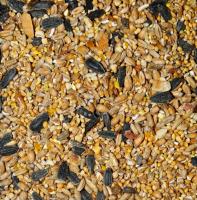- Home
- FAQs
- Customer Video Gallery
- Customer Photo Gallery
- Bird Facts
- Bird Food Blog
- Bird Information
- Feeding Advice
- Small Animal Information
- A to Z of Guinea Pigs
- A to Z of Hamsters
- A to Z of Rabbits
- Basic Care for Guinea Pigs
- Basic Care for Hamsters
- Basic Care for Rabbits
- Basic care for Chinchillas
- Basic care for Ferrets
- Basic care for Gerbils
- Basic care for Mice
- Basic care for Rats
- Buying a Healthy Small Animal
- Does your Reptile need a Licence
- Equipment for Ferrets
- Equipment for Hamsters
- Equipment for Mice
- Equipment for your Chinchilla
- Equipment for your Gerbil
- Equipment for your Guinea Pig
- Equipment for your Rabbit
- Keeping a House Rabbit
- Dog Information
- Cat Information
- Customer Information
- Fat Balls
- Suet Pellets
- Straights
- Seed Mixes
- Suet Treats
- Mealworms
- Bird Feeders
- My Account

| Scientific Name | Garrulus glandarius |
| Breeding | late April |
| Fledge Days | 20-23 |
| Incubation Days | 18 |
| Lifespan | 4 years |
| Number of Clutches | 1 |
| Number of Eggs | 4-5 |
| Size | 34 - 35cm |
| Weight | 140 - 190g |
| Wingspan | 55cm |
Bird Family : Crows and Allies
Jay Facts - Information About Jay
(Eurasian) Jay - Garrulus Glandarius
The jay is our most colourful; member of the Crow Family. It is similar in size to the Jackdaw and is always found in close proximity to trees. It is unmistakable due to its salmon pink, blue, black and white plumage. It is a resident with some winter migrants arriving during cold continental weather.
Identification:
Adult
- Adult males and females are alike.
- Jays are beautiful looking birds, they almost look exotic!
- Many people will tell you about a bird they’ve seen, pink and blue etc etc…it’s nearly always a Jay.
- They are loud raucous birds, often heard before they are seen.
- Jays are about 12” long, with a strong stubby dark bill and a similar build to Jackdaw.
- Adults have an all black tail, gleaming white rump, salmon pink-buff back, shoulders and head.
- The crown is dark streaked crown (which can be erected) black moustache and white throat.
- The wings are black with a large white patch and a smaller blue patch on the marginal coverts.
- Under parts are completely buff/pink…beautiful.
- In flight the Jay obvious features are is very dark rounded wings and tail which contrast with its gleaming white rump.
- Legs are pale.
Juvenile
- Juveniles appear from May onwards and are almost identical to adults.
- Young birds have finer crown streaking and appear darker on the upperparts.
- Otherwise juveniles look the same as adults.
Status and Distribution
The Jay is a very abundant breeding resident in the UK with over 160,000 pairs. The Jay occurs in all counties throughout England and Wales but is less well distributed in Scotland and Ireland.
In winter numbers increase as migrants come to the UK from Continental Europe to escape their cold winters, migrants start to arrive in October to winter in our less severe climate.
Habitat/Food
Jays occur in all habitat types throughout the UK, woodlands, parks, gardens, farmland, hedgerows indeed any open country habitat with suitable scrub.
Jays have a large and varied diet, ranging from fruit, nuts to insects, eggs, nestlings and small mammals. In the garden Jays will quite happily take Seed Mixes, Suet and Mealworms as well as Fruit and Peanuts.
Song/Call
Several call notes; most often a hard raucous ‘Kraaa’ ‘ and an almost dog like barking ‘Caar’ which is often repeated in flight.
The following food is favoured by Jay

























